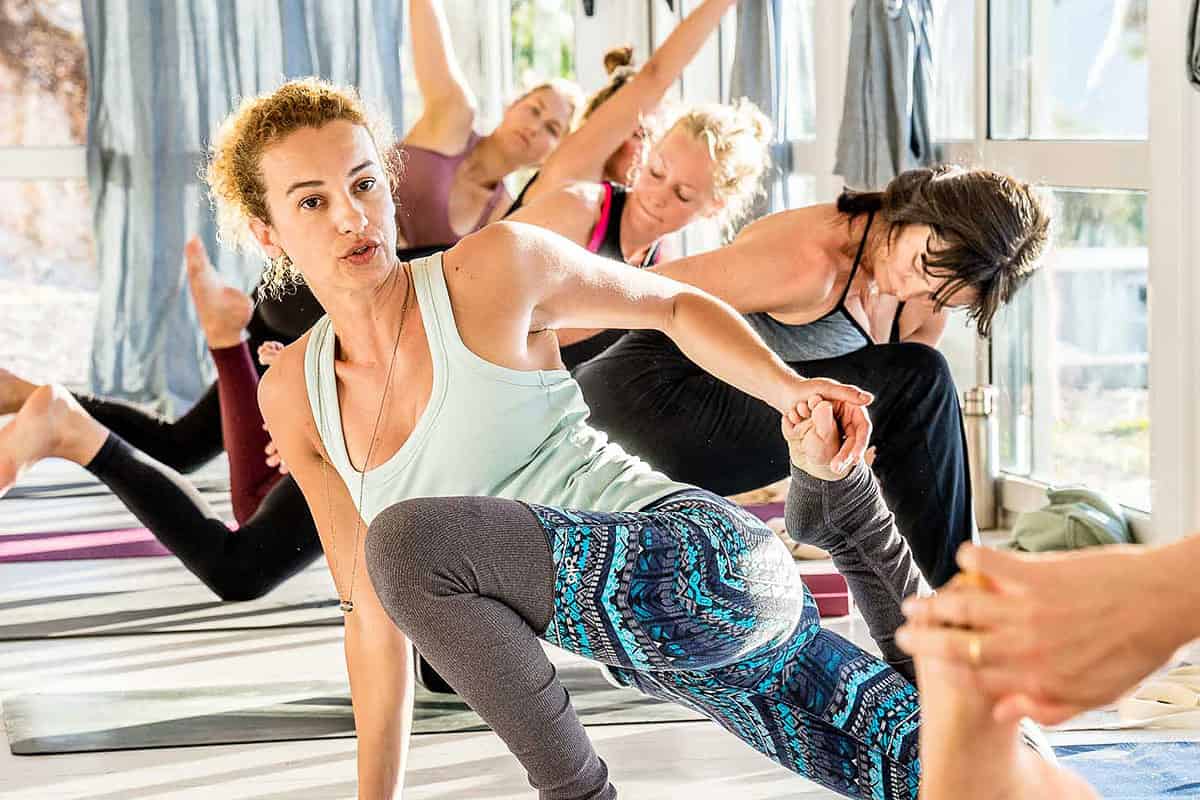When it comes to yoga, there are many styles to choose from, each with its own unique benefits and characteristics. Two popular styles are Power Yoga and Vinyasa. Both of these styles are physically demanding and focus on linking breath with movement, but they have distinct differences that can affect your practice. In this article, we’ll explore the differences between Power Yoga vs Vinyasa and the benefits of each style.
Power Yoga:
Power Yoga is a style that was developed in the United States in the 1990s. It is a dynamic and vigorous form of yoga that is based on the traditional Ashtanga practice.
In Power Yoga, the focus is on building strength, flexibility, and endurance through a series of challenging poses that are performed at a quick pace. The practice is typically done in a heated room, which helps to increase flexibility and detoxify the body.
Vinyasa:
Vinyasa, on the other hand, is a more fluid style of yoga that is characterized by the smooth and continuous flow of movement between poses.
The word Vinyasa means “to place in a special way” and in Vinyasa yoga, the focus is on linking breath with movement in a series of flowing sequences. There are no set sequences in Vinyasa, so each practice can be unique and tailored to the individual’s needs.
Differences between Power Yoga vs Vinyasa:
While both styles of yoga are physically demanding and focus on linking breath with movement, there are several differences between Power Yoga and Vinyasa:
- Pace: Power Yoga is performed at a faster pace than Vinyasa, with quick transitions between poses. Vinyasa, on the other hand, is performed at a slower pace, with a focus on the smooth and continuous flow of movement.
- Structure: Power Yoga follows a set sequence of poses, whereas Vinyasa has no set structure and can be tailored to the individual’s needs.
- Emphasis: Power Yoga places a greater emphasis on building strength and endurance, while Vinyasa focuses more on flexibility and balance.
Benefits of Power Yoga:
Power Yoga is a challenging and physically demanding practice that offers many benefits, including:
- Increased strength and endurance: The fast-paced and repetitive nature of Power Yoga helps to build strength and endurance in the muscles.
- Improved flexibility: The heat in a Power Yoga class can help to increase flexibility and range of motion in the joints.
- Cardiovascular health: The continuous movement in Power Yoga can provide a cardiovascular workout, improving heart health.
Benefits of Vinyasa:
Vinyasa is a more fluid and adaptable style of yoga that offers its own unique benefits, including:
- Increased flexibility: The continuous flow of movement in Vinyasa helps to increase flexibility and range of motion in the joints.
- Improved balance: The focus on balance in Vinyasa can help to improve overall stability and reduce the risk of falls.
- Reduced stress: The linking of breath with movement in Vinyasa can help to reduce stress and promote relaxation.
Here’s a comparison table for Power Yoga vs Vinyasa:
| Category | Power Yoga | Vinyasa |
|---|---|---|
| Focus | Strength, endurance, flexibility, balance | Flow, breath, alignment, mindfulness |
| Pace | Fast-paced, with few breaks between poses | Moderate to fast-paced, with transitions between poses |
| Sequence | More structured, with set sequences of poses | More varied, with sequences tailored to individual classes |
| Intensity | High intensity, with emphasis on building strength | Moderate to high intensity, with emphasis on building endurance |
| Heat | May be practiced in a heated room or studio | Not typically practiced in a heated environment |
| Popular poses | Plank, chaturanga, warrior poses | Sun salutations, downward-facing dog, tree pose |
| Suitable for | Those seeking a challenging workout with a focus on strength | Those seeking a dynamic flow with a focus on mindfulness |
It’s important to note that while there are some differences between Power Yoga vs Vinyasa, they are both forms of yoga and share many similarities. Ultimately, the best type of yoga for an individual will depend on their personal preferences and goals.
Conclusion:
Both Power Yoga and Vinyasa are physically demanding styles of yoga that offer their own unique benefits. Power Yoga focuses on building strength and endurance, while Vinyasa focuses on flexibility and balance.
Ultimately, the choice between Power Yoga and Vinyasa comes down to personal preference and goals. By understanding the differences and benefits of each style, you can choose the one that is best suited to your individual needs and preferences.
Originally posted 2023-03-01 22:23:49.
Co-founder of Yogalian.com. Over 8 years of sharing yoga and mindfulness across Vietnam and online. Passionate about bringing body awareness and peace into daily life.





